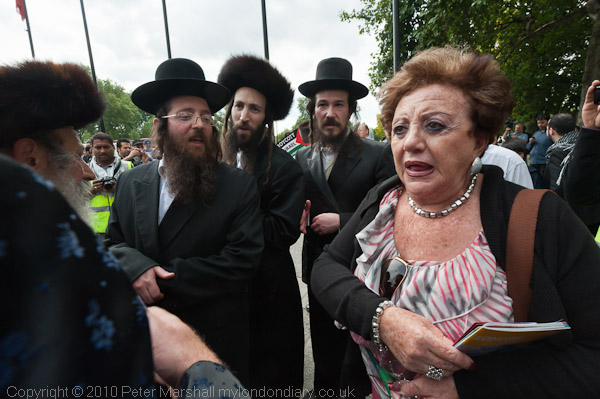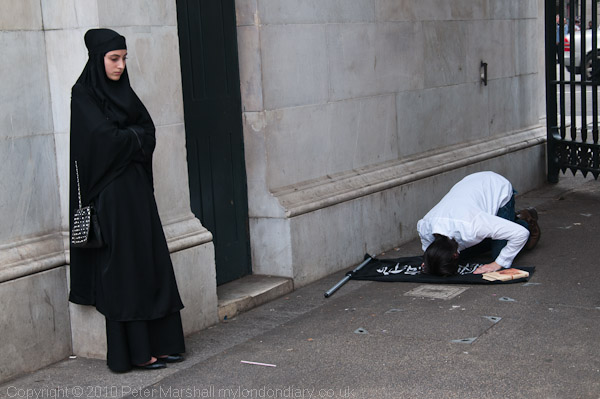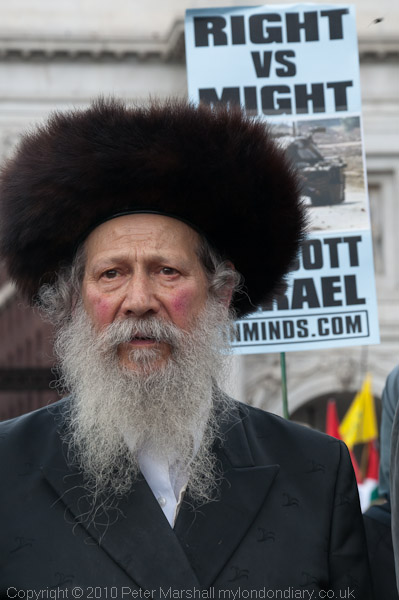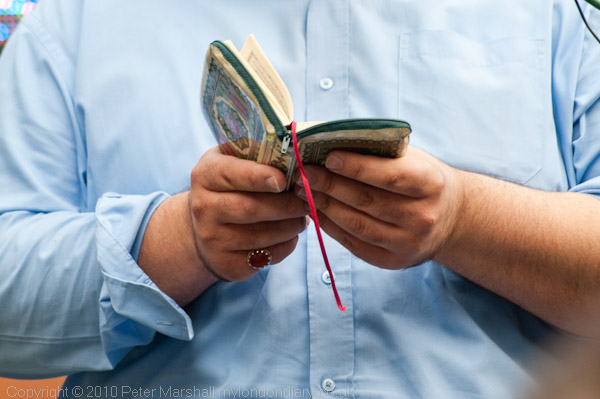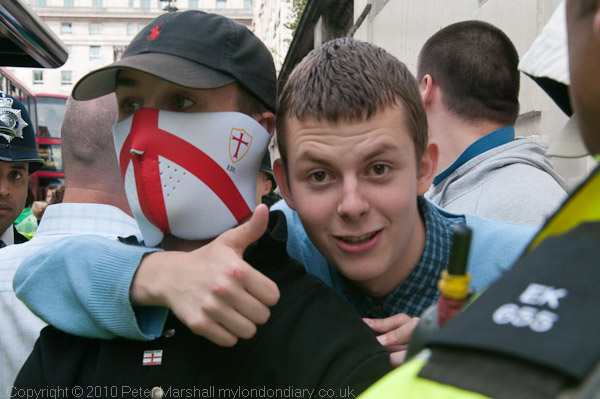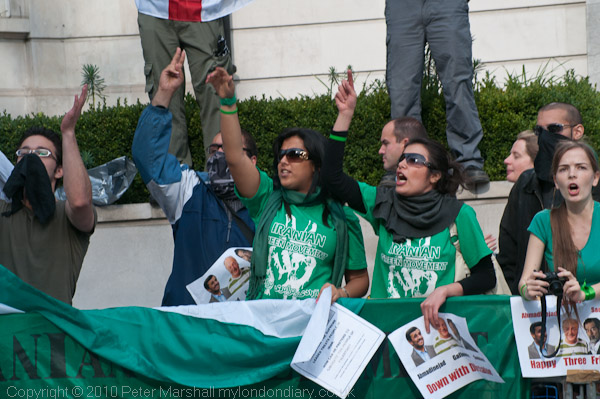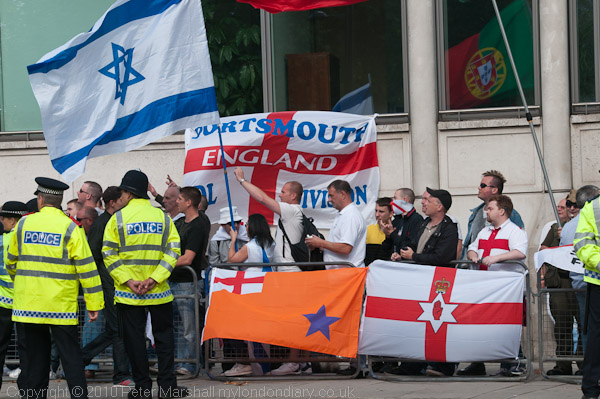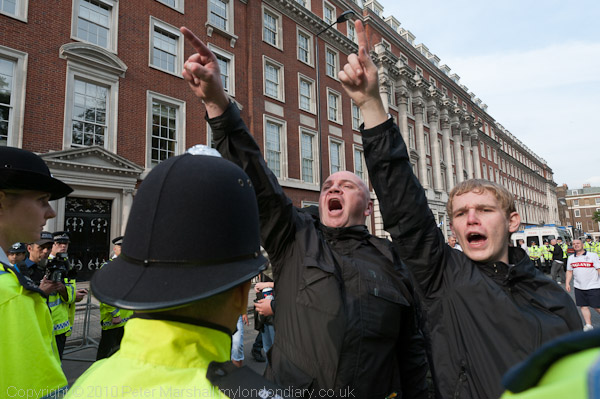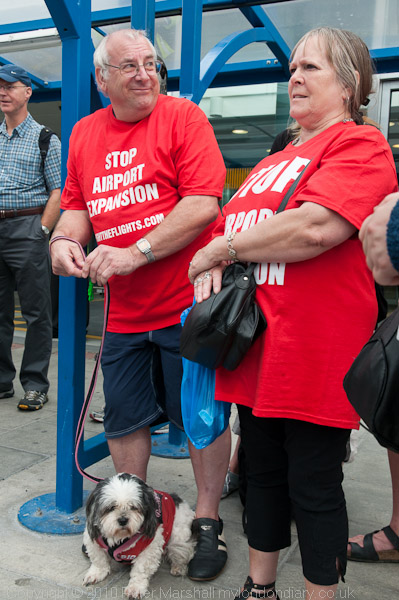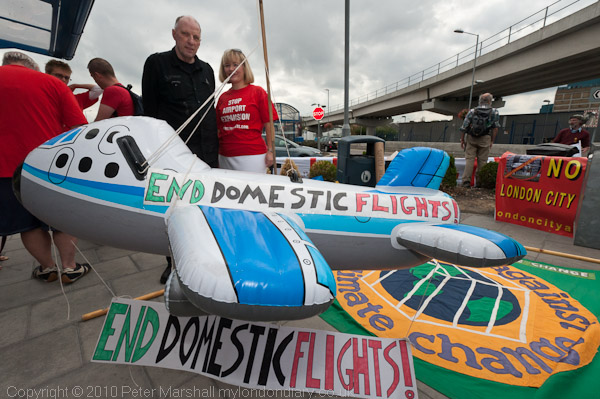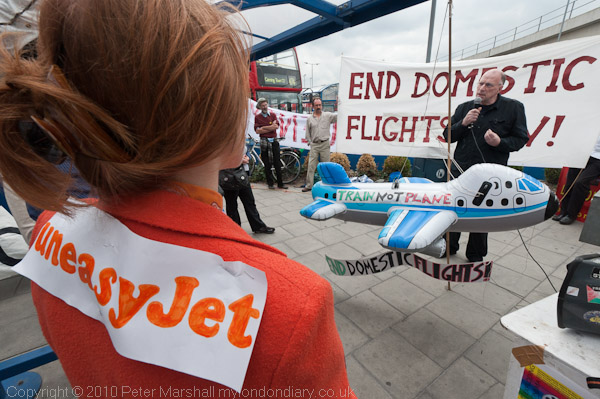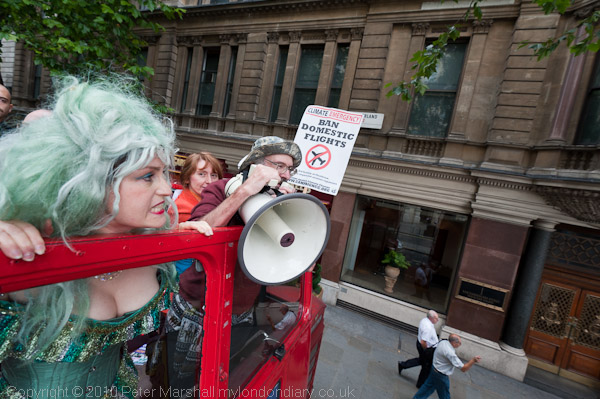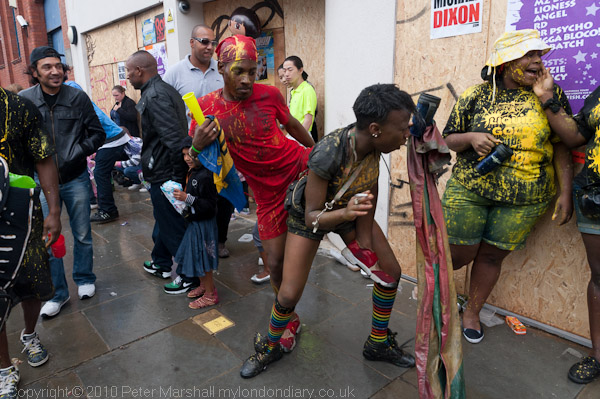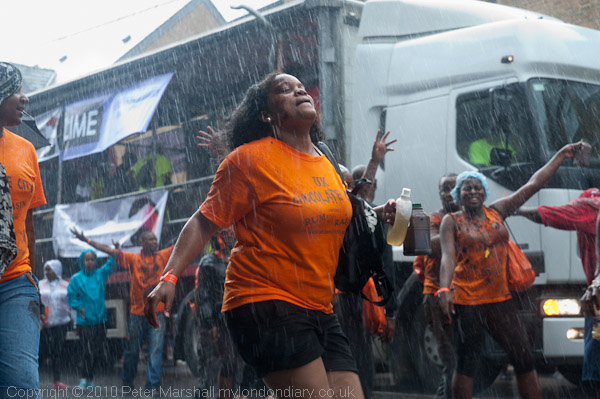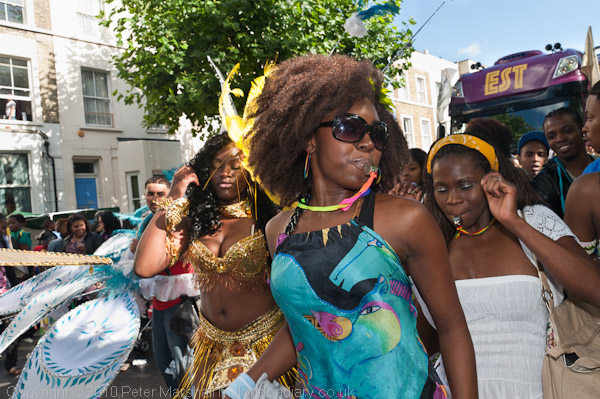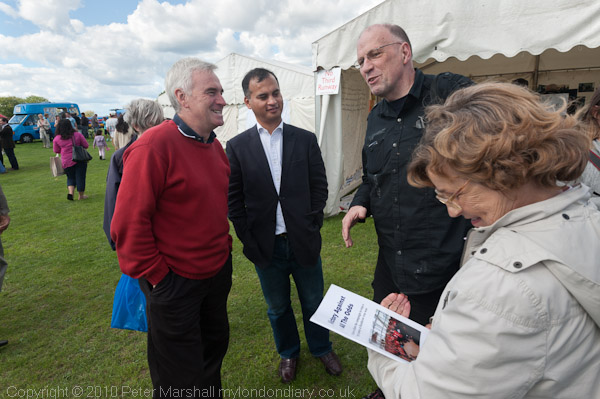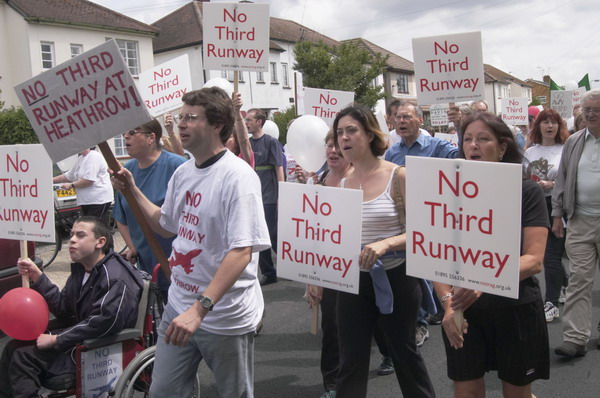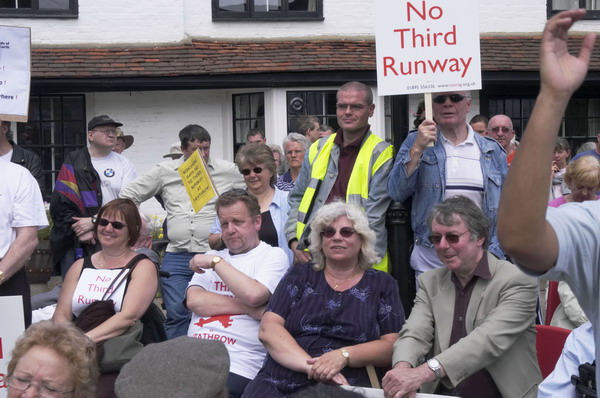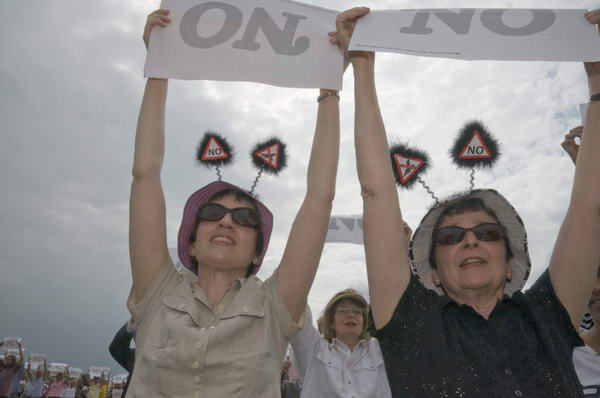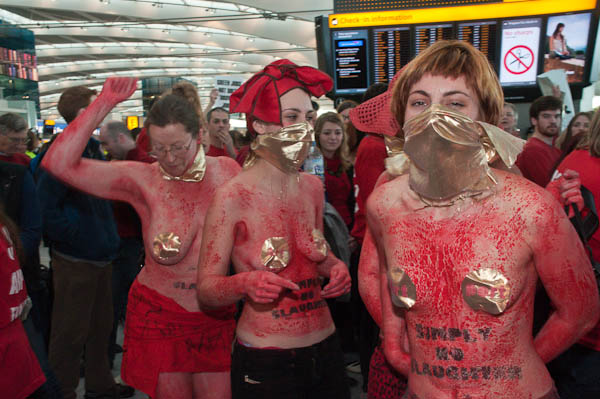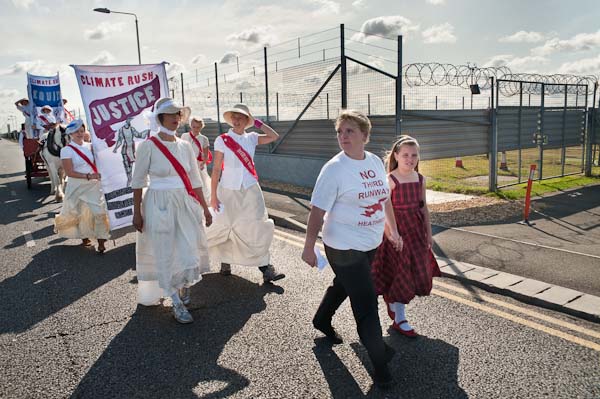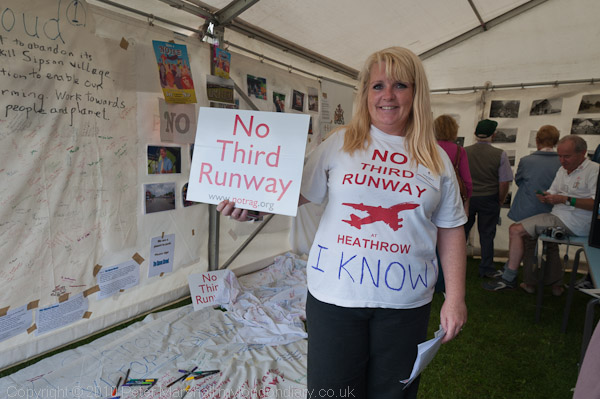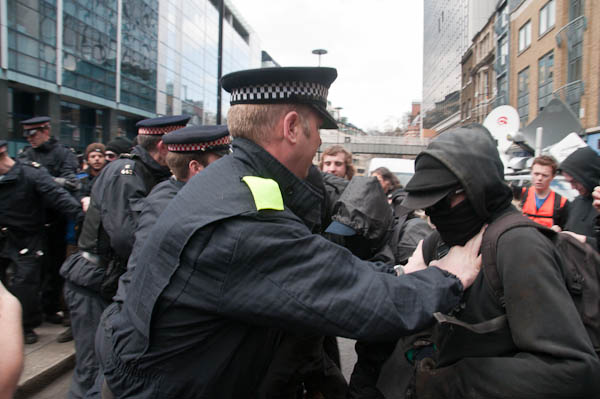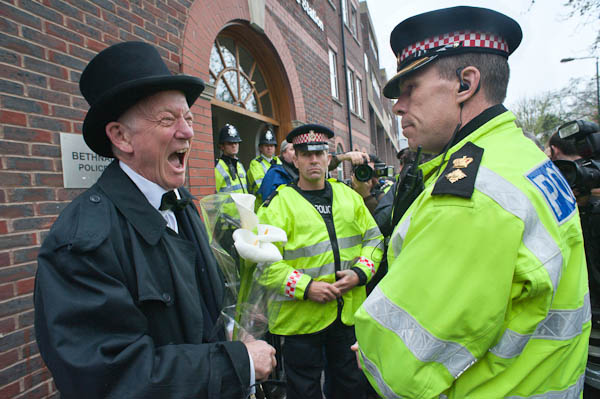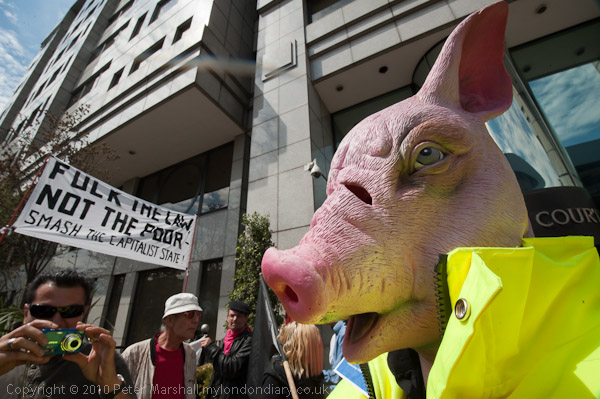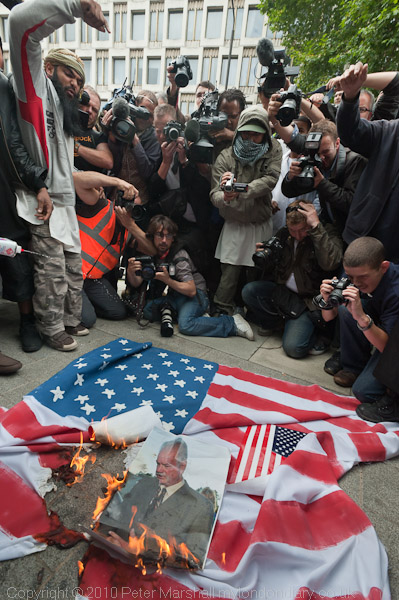
US Flag, photo of pastor Terry Jones, lighter fuel, US Embassy & Press. 16mm
One of the things that stuck in my mind from Antonio Olmos’s talk at Photoforum last Thursday was the advice given to him that he passed on to us, that “if you find yourself surrounded by photographers, you are almost certainly in the wrong place.”
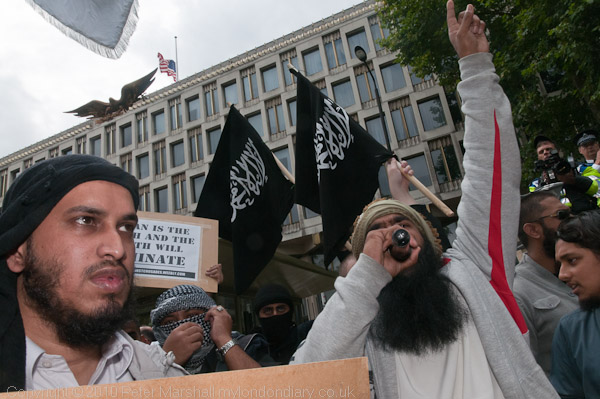
Rather tightly framed – and it would have been nice to read the placard
But at times at events such as Saturday’s demonstration and counter-demonstration outside the US Embassy in London’s Grosvenor Square there was rather a crush and it couldn’t be avoided. However at one point I found myself facing a very large group of photographers and was pretty sure that I was in a better place than they were.
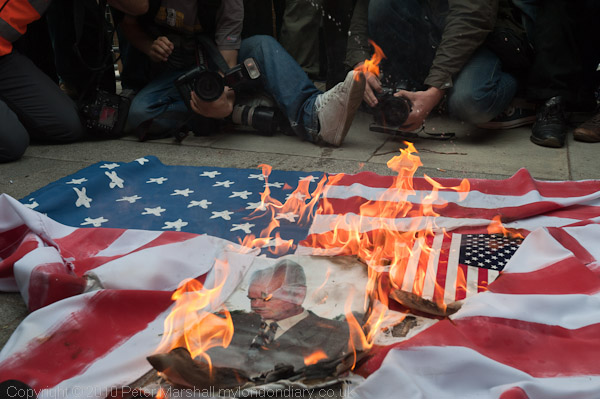
Pastor Terry Jones and the US Flag go up in flames
I’d been in the small crowd of Muslims Against Crusades taking pictures as they milled around on the pavement when I realised that their main man, Anjem Choudary, was beginning his speech and was able to get behind the front row of his listeners just a few feet from him to take pictures. I’d followed one man with a largish TV camera, and shortly afterwards there was another similar camera on my left shoulder. As often happens I had to move forward slightly to get their lenses out of my field of view, getting right up to one of the other MAC speakers.
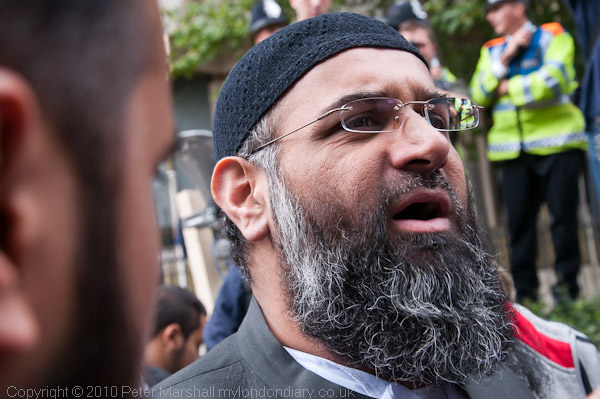
Anjem Choudary speaking outside US Embassy, police look on
Apart from wanting to photograph Choudary speaking, I knew that he was going to be around when they burnt the US Flag, so was a guy to stay close to. It would be good to get him in the frame as well as the burning flag, and if I could also have something recognisably the embassy in some of the pictures it would be a bonus. The most obvious thing was of course the eagle and flag – at half mast for 9/11 – on the top of the building.
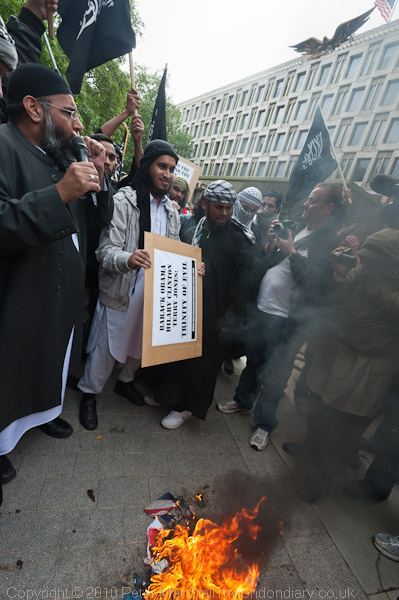
A few more inches back would have been nice – but impossible
After the speech the crowd became more fluid as the flag was produced and I was able to move slightly to where I wanted to be. And I more or less got the pictures I had wanted, although at some point another photographer squeezed down low – but not quite low enough – in front of me. Those burning the flag placed it and also the photograph of pastor Terry Jones (which was remarkably resistant to burning) the right way round so far as I was concerned too, and the pack of photographers on the other side made an interesting background for some of the pictures.
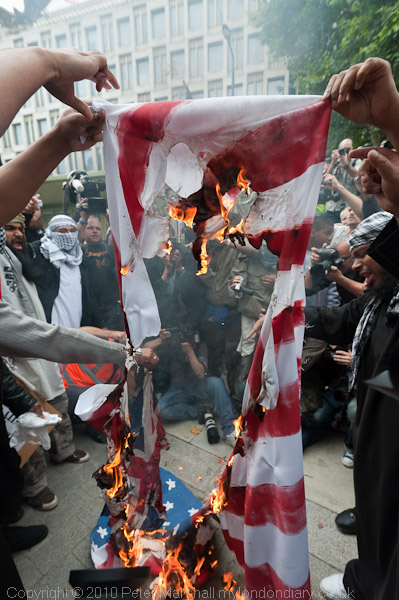
Not quite low enough!
It would have been nice for all of us to have been able to move exactly where we wanted to get the best pictures, but of course that isn’t practical in such situations. There are always photographers saying “let’s move back so we can all get a picture”, but it seldom can work – and no hope at all in situations like this. You have to get in there while respecting the people working around you as much as possible by trying not to get in their way, and do the best you can.
Moving back occasionally makes sense, but generally it results in nobody getting a decent picture (and here we were in the middle of a crowd and couldn’t move back.) Capa’s dictum “if your pictures aren’t good enough, you’re not close enough” usually applies.
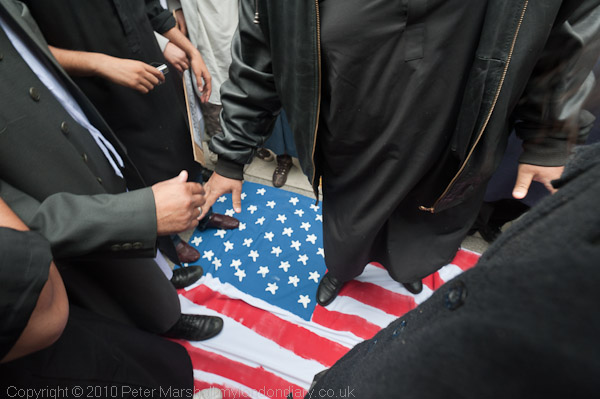
Trampling on the flag needed a very close approach to see anything. 16mm
As people continued to squirt lighter fuel onto the flames I would have preferred to be a few inches further away as it was getting uncomfortably hot. Some of the pictures are taken at 16mm and the flames were rather closer than they look.
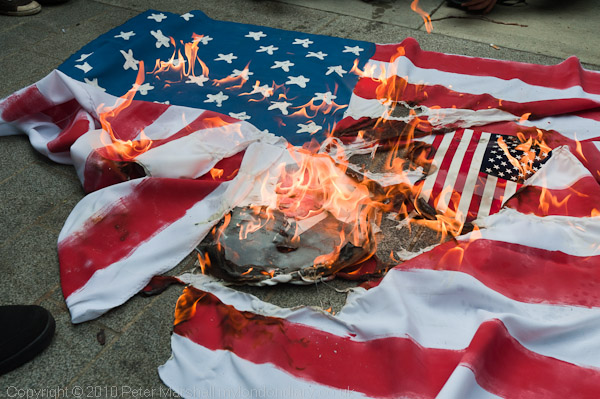
35mm, but I was still getting rather hot
Later, as I was standing around between the MAC and the EDL and talking with other photographers we decided there was little to choose between the two groups of extremist demonstrators (or come to that government whose embassy we were in front of, that had given the world Vietnam, Guantanamo and more.) We thought about living under a country ruled by either of the two groups. The MAC seemed slightly more civilised, but there were other things to consider. “Beer” I said, “at least under the EDL you could get drunk enough not to care.” “Bacon butties” added another, but the real clincher came with “Adultery!”
My own politics? Well, if anyone ever tries to form a Liberal Democratic Christian Socialist Anarcho-syndicalist Environmentalist Situationist vaguely Pacifist party I’ll probably double it’s strength as shadow minister for culture and sport, areas where I would have some really interesting policies. Photography (real photography that is) would certainly get a much better deal under our administration and the current art establishment would be in for a very hard time. As for sport I’m at least 110% for it and think we should all be encouraged to do some, though of course I’d institute a total ban on anyone getting paid for playing games. You’ll have to wait for the rest of our manifesto.
More about the MAC protest and more pictures on Demotix, where there is also a separate post about the EDL, who earlier had marched to the 9/11 memorial, laid a couple of wreaths and held a two minute silence for the 9/11 victims before coming to shout at the Muslim extremists. More pictures still in a few days time on My London Diary.
